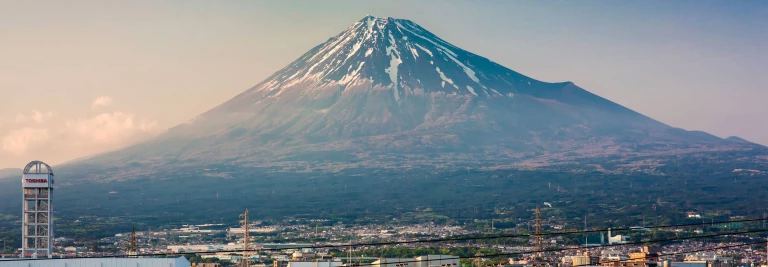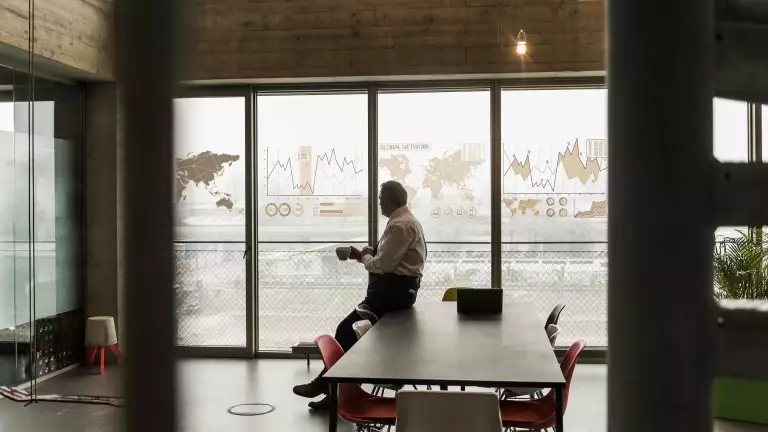Over the past year, the M&A landscape faced its most prolonged challenges since the 2008–2009 financial crisis. Rising interest rates, geopolitical instability, and recession concerns were among the factors driving a slump in deal activity globally. However, since hitting its lowest point in the first quarter of 2023, global M&A activity is showing signs of revival. Looking forward, we expect the main deal drivers globally to be corporate portfolio transformations, ESG-related acquisitions and divestments, and digitization efforts.
Although the global landscape is straightforward to describe, we see much more nuanced pictures at the regional level. To gain clarity, we asked BCG experts in six regions to describe the state of play in their M&A market and share insights about near-term deal drivers.
BCG experts in six regions discuss the state of their M&A market and share insights about near-term deal drivers.

The African Perspective

Africa’s M&A market has experienced significant turbulence amid post-pandemic economic and geopolitical uncertainty. The renewable energy and material sectors have been bright spots, however, and seem poised to lead the market’s recovery.
The market’s downturn can be traced to the second half of 2022 when the region’s total deal value fell to $6 billion—a sharp 62% decline compared to the first half of the year. For context, the market surged to an all-time high in 2021, with deal values exceeding $44 billion, signaling that dealmakers were playing catchup after the initial shock of the COVID-19 pandemic had passed. The merger of the Angolan oil and gas businesses of BP and Eni contributed to this dealmaking peak.
The post-pandemic surge was followed by a reversion to more normal levels of M&A activity. Deal value in the first half of 2023 was $4 billion—a 73% drop from the first half of 2022, versus a 45% decline globally. However, the steep year-on-year decline masks the emergence of an active M&A market over the past decade that should promote continued strength.
Several sectors in Africa have bucked the recent downward trend:
- Renewable Energy. Seeking greener and more secure energy sources, investors turned their attention to Africa’s renewable energy sector. An example is the pending acquisition of BTE Renewables for more than $1 billion by a consortium formed by Meridiam and Engie. In 2022, the renewable energy sector attracted a record-breaking $118 billion in foreign direct investment (FDI), representing more than 60% of total FDI inflows to Africa. The leading investors in the sector are UAE and India, followed by the UK and France.
- Materials. Rising concerns over access to raw materials have spurred M&A in Africa’s materials sector over the past two years. The largest deals in 2023 so far have occurred in the materials sector. China Natural Resources has agreed to acquire Williams Minerals, a Zimbabwe-based lithium mine operator, for almost $600 million. Lilium Mining acquired a 90% stake in the non-core gold mines of Endeavour Mining in Burkina Faso for $300 million.
- Health Care. The pandemic underscored the need for African countries to develop the skills and capacity to independently address the health challenges of their growing populations. This realization has attracted investors to the health care sector. A standout example is Manta Bidco's acquisition of Mediclinic International for $2.5 billion.
- Technology. The emergence of a technology ecosystem in Africa is a catalyst for transactions and fundraising in many countries. Among others, Kenya, where tech deal value spiked in 2022, is very active in technology-driven transactions.
In 2022 and the first half of 2023, the most active countries in the region in M&A volume and value were South Africa and Egypt, followed by Nigeria and Kenya.
Looking ahead, we see a mix of challenges and opportunities. Persistent global instability may dampen investors’ enthusiasm, leading to heightened risk aversion, especially toward investment opportunities in a continent with an extremely complex business landscape. An emerging movement toward increased protectionism among African countries could impede international investment flows to certain markets; conversely, however, it might spur transactions among African entities. The growing number of African-led acquisitions and the rise of Africa-focused sovereign funds, private equity investors, and family offices underscore the potential for more locally generated M&A activity. At the same time, global players from China, India, and the Middle East are steadily expanding their presence in Africa.
Several other trends and considerations are noteworthy:
- Energy Transition and Infrastructure. Prominent investors may begin consolidating market shares and leveraging their regional platforms to expand their reach into the developing continent. Governments and investors recognize the need to close notable gaps in the infrastructure and energy sectors. As a result, we expect to see substantial investments in electrical grids, natural gas, renewables, and green hydrogen, among other areas.
- ESG. As in other regions, environmental, social, and governance (ESG) factors have become key considerations in African M&A transactions in recent years. We expect this trend to persist in the long run despite recent skepticism from some global investors about the impact of ESG constraints on companies.
- Sourcing. Supply chain considerations will promote M&A investments, as companies’ sourcing strategies emphasize proximity and security. Thanks to its abundant natural resources and young population, Africa is well positioned to serve as a sourcing hub for neighboring markets. Notably, the presence of good infrastructure, attractive locations, and favorable legal frameworks in Morocco, South Africa, and Egypt give those nations an edge over other African countries. Consolidation among logistics players to better serve African hinterlands, known as “corridor integration,” will also lead to new deals.
- Capital Availability. Around the world, private equity firms and family offices are flush with cash available for deployment. As the right opportunities emerge, the accumulated dry powder of financial sponsors, including African investors, will boost M&A activity. Although investors’ risk aversion has depressed valuations, we may see a tipping point at which low valuations entice a flood of capital. If that occurs, however, the capital influx may predominantly benefit regional players over multinational companies operating in Africa, as some of the latter are reducing their regional investment and exposure.
Against this backdrop, the energy and materials sectors, along with the broader industrial sector, will likely maintain their momentum and spur the M&A market’s resurgence. Some companies in these sectors have robust balance sheets and available cash. They also stand to benefit from higher commodity prices. Their strong positions might lead them to recalibrate their diversification strategies in search of growth opportunities. Major industry players are likely to explore consolidating their market positions by leveraging regional platforms to expand their African presence.
The author is grateful to Jens Kengelbach, Oussama Bouziad, and Yiran Wang of BCG’s Transaction Center for their valuable insights and support in the preparation of this article.

The European Perspective

We are seeing early signs of a resurgence in European dealmaking. Trends that should last well into the future support this revival and should drive activity beyond 2023.
Recent European M&A activity has mirrored global trends. Activity soared to record levels in 2021 and maintained momentum into the first half of 2022, followed by a slowdown in the latter half of 2022 that extended into early 2023. European deal value declined by 55% from the first half of 2022 through the first half of 2023, exceeding the 45% drop globally. Then came a rebound, as the second quarter of 2023 witnessed a substantial resurgence compared with the previous quarter. The main driver of this recovery was large deals (those valued at over $500 million). Despite this upswing, however, activity continues to trail long-term averages.
In Europe, the green technology, materials, and software sectors have remained relatively active in 2023, particularly for larger deals:
- Green Technology. The energy transition is promoting deals involving green technology in the heating industry. The most prominent example is Carrier Global’s acquisition of Viessmann’s Climate Solutions division in Germany, valued $13.2 billion.
- Materials. Large M&A deals have been spurred by shifting demand for specific resources and attractive commodity prices for metals, mining, and agricultural products. A noteworthy example is Switzerland-based Glencore's bid to acquire Teck Resources for $31.4 billion.
- Software. The peak activity of M&A in the software industry during the COVID-19 recovery period has flattened somewhat. Nevertheless, the sector remains of great interest to strategic and private equity acquirers, as exemplified by Bain Capital’s $3.8 billion bid for SoftwareONE.
Private equity players made several prominent European deals, such as EQT's purchase of Dechra Pharmaceuticals in a deal valued at $5.5 billion. Even so, deal activity involving private equity and venture capital has dropped off significantly from its peak level. The proportion of European M&A deals involving private equity fell from 39% in 2021 to 36% in the first half of 2023—a steeper decline than the global average.
Beyond sector-specific trends, a defining moment for European M&A in 2023 was UBS's $3.3 billion rescue takeover of Credit Suisse in March. The deal played a vital role in stabilizing capital markets at the time. The trajectory of European dealmaking might have taken a drastically different turn had this transaction not proceeded smoothly. Moreover, the purchase price has proved to be a great bargain for UBS. Another major deal occurred in the packaging industry, with the merger of US-based WestRock and the Irish company Smurfit Kappa, announced in September and valued at $11.5 billion.
Although European dealmakers must contend with market volatility and macroeconomic and geopolitical uncertainty going forward, we see several immediate catalysts for M&A activity in today’s market:
- Energy Transition. The imperative to invest in European energy independence and the transition to renewable energy will influence multiple sectors, as noted earlier in relation to green technology.
- Automotive Transition. The transition of the automotive industry to alternative drivetrains will lead to more deals—for example, to secure supply chains or gain access to suitable technology. Early examples of such deals are Volkswagen’s $650 million investment in and cooperation with Chinese electric vehicle maker Xpeng and Stellantis’s acquisition of a 33.3% interest in the fuel cell joint venture Symbio.
- Digital Competencies. The urgent push to expand digital and technological competencies, especially in light of ongoing innovations in generative AI, will promote acquisitions to gain relevant capabilities. An example is BioNTech’s acquisition in January of AI-startup InstaDeep, with a deal value of $680 million.
- Calmer Economic Conditions. Steady or even declining interest rates in Europe will reinvigorate private equity activity. Many investment firms hold significant untapped capital that is awaiting deployment.
From the sellers’ perspective, the need to finance investments in areas of growth will promote a rebound in divestitures and carve-outs. European divestment activity as a percentage of overall deal volume has been on a downward trajectory since peaking in 2019 and is now approaching the global average. In addition, we are seeing an uptick in European companies getting ready for an initial public offering (IPO)—from initial discussions to more concrete preparations—which signals an imminent comeback of IPO activity.
The author is grateful to Daniel Kim and Yiran Wang of BCG’s Transaction Center for their valuable insights and support in the preparation of this article.

The Japanese Perspective

Among the major economies in the Asia-Pacific region, only Japan experienced an uptick in M&A deal volume and value in the first half of 2023. Factors such as low interest rates, recent reforms, shareholder pressure, and slower organic growth will continue to foster a strong M&A market in Japan.
Japan's deal value in the first half of 2023 surged by approximately 50% compared with the first half of 2022. Other Asia-Pacific markets experienced double-digit declines, contributing to a 45% drop in deal value globally.
Activity in the technology and health care sectors fueled the Japanese M&A market:
- Technology. Tech-related deals dominated the first half of 2023, accounting for approximately 40% of the total deal value. In the largest take-private deal, Japan Industrial Partners announced plans to acquire Toshiba, the struggling tech giant, for $15 billion. In another mega deal, Ichigo Trust paid $2.0 billion to increase its stake in Japan Display, an audio and video equipment manufacturer, to approximately 90%.
- Health Care. Despite the yen's depreciating value, Japanese strategic buyers remained keen on international health-care acquisitions, aiming to tap into fresh revenue sources. Japan-based Astellas Pharma, known for its aggressive M&A strategy in recent years, announced its acquisition of US-based IVERIC Bio for $6 billion. In a move to diversify its portfolio, Japanese beverage producer Kirin Holding purchased Australian vitamin manufacturer Blackmores for $1.2 billion.
Financial sponsors maintained their enthusiasm for Japan-based targets. From 2013 to 2022, sponsor-led deals focused on Japanese entities increased threefold. In 2022 alone, financial sponsors acquired more than 300 companies. Aside from Japan Industrial Partners’ takeover of Toshiba, one of the top deals in 2023 was JIC Capital’s announced acquisition of chipmaker and resin producer JSR Corp for $6.3 billion.
Going against the global trends, Japan's persistently low interest rates and abundant liquidity have heightened investors’ appetite for available opportunities. Against this backdrop, Japan's M&A trajectory will likely reflect the influence of improvements in corporate governance policies and a stronger focus on creating shareholder value.
Recent reforms by the Japanese government have prioritized inspecting companies whose stock is trading at less than the book value of their equity, diversifying boards, enhancing disclosures, and intensifying scrutiny of decisions to reject takeover offers. Mounting pressure from shareholders to produce higher returns, coupled with Japanese companies' lower valuations compared with their US and European peers, will also continue to promote dealmaking.
In addition, as Japanese markets have matured and experienced slower growth, companies are turning to M&A to open new avenues for growth and higher shareholder returns. To achieve greater revenue and profit growth, Japanese companies are using acquisitions to enable overseas expansion, the development of new businesses, and business model transformation.
The author is grateful to Jens Kengelbach, Ashish Baid, and Yiran Wang of BCG’s Transaction Center for their valuable insights and support in the preparation of this article.

The Middle East Perspective

M&A activity in the Middle East has been more resilient than in the overall global market. The region’s sovereign wealth funds and state-owned entities have been especially active. Economic diversification and enhancement of digital competencies will help drive near-term dealmaking.
Megadeals fueled record levels of Middle Eastern M&A activity in 2019, and the dealmaking momentum continued into the first half of 2020. Since then, the market has experienced lower, albeit average, levels of activity. Deal values in the first half of 2023 were similar to those in the first half of 2022, compared with a 45% decline globally. In contrast, deal volume in the first half of 2023 declined by 22%, versus a 15% decline globally. The region's M&A activity in the second quarter of 2023 was much stronger than in the first quarter, propelled primarily by larger deals.
Despite the prevailing market headwinds, Middle Eastern energy, chemicals, and technology sectors have remained relatively active in 2023. This is particularly true with regard to larger deals. Examples include the following:
- Energy. Middle East oil and gas players are increasing their global reach, as exemplified by Abu Dhabi National Oil Company’s announced acquisition of a 30% stake in the Absheron Gas Field in Azerbaijan from the State Oil Company of the Azerbaijan Republic and TotalEnergies. They are also moving further into downstream businesses, such as oil refining and retail. Examples include the acquisition by Saudi Arabian Oil Company (Aramco) of a 10% interest in Rongsheng Petrochemical Co., based in China, for $3.4 billion, and its acquisition of Chile’s Esmax Distribusción.
- Chemicals. Similar trends are occurring in the chemicals industry. For example, Aramco acquired Valvoline Inc’s US-based global lubricant products business for $2.7 billion, and ADNOC is reportedly in discussions with the German chemicals company Covestro to explore a potential acquisition valued at more than $10 billion.
- Technology. Brookfield Business Partners, a private equity firm, has acquired UAE-based Network International in a deal valued at $2.7 billion. The firm aims to expand its payments business in the Middle East and Africa.
Although private equity and venture capital firms experienced a significant decline in global deal activity since the beginning of 2022, Middle Eastern sovereign wealth funds, along with the companies they support, bucked this trend. Armed with substantial capital and liquidity, they are investing across various regions, sectors, and themes. These firms have adopted varied, long-term strategies to diversify in directions other than simply those involving natural resources and to support the growth of their national economies.
To maintain an upward trajectory, Middle Eastern dealmakers must navigate uncertainty surrounding fears of a global recession as well as ramifications of geopolitical conflicts and existing tensions. Amid these challenges, two near-term drivers of M&A activity are especially notable:
- Economic Diversification. Companies and governments must invest to diversify the region's economy away from its longstanding dependence on oil and natural gas production.
- Digital Competencies. The pressing need to enhance digital and technological competencies, especially in view of the looming disruptions posed by generative AI, will motivate acquisitions to secure necessary capabilities.
From the perspective of sellers, strategic portfolio reviews will lead to corporate divestitures and initial public offerings (IPOs), as investors and companies seek to monetize some of their investments and redirect the funds toward other growth opportunities. IPOs also serve the strategic purpose of developing local capital markets.
The author is grateful to Daniel Kim and Yiran Wang of BCG’s Transaction Center for their valuable insights and support in the preparation of this article.

The North American Perspective
M&A activity in North America reflects global patterns. After achieving record highs in 2021 and maintaining momentum through the first half of 2022, dealmaking began to decelerate in the latter half of 2022 and into the first half of 2023. From the first half of 2022 to the first half of 2023, North American deal value declined by 37%, compared with a 45% drop globally. North American deal activity in the second quarter of 2023 matched levels seen during the initial shock of the COVID-19 pandemic in the second quarter of 2020, significantly trailing the long-term average for both large deals (those exceeding $500 million) and smaller transactions.
Despite these headwinds, the North American health care, energy, and materials sectors have remained relatively active in 2023, particularly for larger deals:
- Health Care. Sustained interest in developing drugs and treatments in areas such as oncology and immunology has propelled deal activity. One notable example is Pfizer’s acquisition of Seagen in an all-cash transaction valued at $43.8 billion.
- Energy. The extensive energy transition is in full swing, with energy and oil and gas companies allocating capital to M&A activity. Upstream consolidation and diversification into low-carbon and other clean solutions stand out as primary motivators.
- Materials. Shifting demand for specific resources, coupled with attractive commodity prices in metals, mining, and agricultural products, has spurred large-scale M&A deals. Noteworthy examples include Glencore's bid to acquire Teck with deal value of $31.4 billion, Newmont's merger with Newcrest for $18.3 billion, and the proposed merger of Bunge with Viterra for $18.0 billion.
After a flurry of transactions, the technology sector has entered a quieter period with reduced activity. Private equity and venture capital have similarly seen significant declines in dealmaking.
The current regulatory environment is challenging, with recent merger guidelines released by the US Department of Justice and the Federal Trade Commission signaling increased scrutiny. As of August 2023, approval is still pending for several significant deals, including Microsoft-Activision and Broadcom-VMware.
North American dealmakers returning to the negotiation table will continue to grapple with uncertainty regarding the likelihood of a recession as well as with market volatility and geopolitical tension. Amid these challenges, we see several near-term drivers of M&A activity:
- The imperative to invest in the energy transition will influence multiple sectors, both within and beyond oil and gas, given the need for appropriate infrastructure and capabilities.
- The urgency to enhance digital and technological competencies, especially with the impending disruption from generative AI, will drive the need to acquire capabilities.
- The prospect of stabilizing—and, eventually, declining—interest rates in North America will fuel a resurgence in private equity activity. On top of this, many investment firms have abundant dry powder that they must invest.
In addition, the scarcity and higher cost of capital will lead to corporate divestitures as companies seek to finance investments in areas of growth. Although divestitures in North America (as a percentage of overall deal volume) have steadily rebounded over the past two years, they still trail global levels. We also expect that private equity firms will continue to be active buyers of corporate carve-outs.
Evolving regulations and increased scrutiny could delay deal execution, but we anticipate that dealmakers will adapt to longer timelines to closing and will intensify their efforts to anticipate and mitigate potential regulatory obstacles.
The author is grateful to Jens Kengelbach, Thomas Endter, and Yiran Wang of BCG’s Transaction Center for their valuable insights and support in the preparation of this article.

The Southeast Asian Perspective
M&A activity in Southeast Asia (SEA) has declined since peaking in 2021. Going forward, however, outbound M&A from acquirers in China and Japan could support an increase in M&A in the region. Singapore is poised to be the primary dealmaking hub within the region.
After reaching record highs in 2021, SEA deal value cooled in 2022, dropping by 40% from the previous year. This plunge reflected the absence of any mega tech deals of the magnitude of 2021’s $8 billion merger forming GoTo or the public listing of Grab via a $34 billion merger with a special-purpose acquisition company (SPAC).
The global economic challenges of high interest rates, inflation, supply chain disruptions, geopolitics, and regulatory changes continued to affect dealmaking in the first half of 2023. Although SEA's deal value fell by 15% compared with the first half of 2022, that figure is still better than the global decrease of 45% over the same year-on-year period. The region’s dip primarily resulted from a reduction in the number of large deals, which were significantly below both pandemic levels and long-term averages.
The automotive and food and beverage sectors in SEA have remained active in 2023, particularly for larger deals:
- Automotive. The automotive sector accounted for approximately 60% of SEA's deal value in the first half of 2023. Forecasts of strong growth in electric vehicle adoption helped fuel public listings via SPAC mergers. For example, Vietnam-based VinFast Auto merged with Black Spade Acquisition for $23 billion, and Chinese automaker Lotus Tech merged with Singapore-based L Catterton Asia for $5.5 billion.
- Food and Beverage. As borders reopened and travel and leisure activities resumed, SEA's food and beverage sector experienced a surge in deal-making. Coca-Cola Europacific Partners announced its acquisition of Coca-Cola’s Philippines operations for $1.8 billion, aiming to become the world’s largest bottler of the iconic soft drink. Meanwhile, global beverage giant Diageo acquired the Philippines-based premium rum brand, Don Papa Rum.
Outbound M&A activity from China and Japan has significantly influenced SEA cross-border deals. The number of Chinese companies pursuing external deals has substantially decreased due to the pandemic, geopolitical tensions, and regulatory obstacles, leading to a steep reduction in Chinese companies' acquisitions of cross-border targets. Owing to its geographic proximity to China and the more limited acquisition opportunities for Chinese companies in European and American markets, SEA is likely to become a preferred destination for Chinese outbound investments if they pick up. Moreover, Japanese acquirers could pursue M&A deals in SEA to offset slower domestic growth opportunities in Japan.
Within SEA, Singapore is likely to account for the lion’s share of deals because its investment climate and financial sector have proven more robust than those of other countries in the region. Conversely, dealmaking in Indonesia may be more subdued, as investors exercise caution in anticipation of the country's general elections in February 2024.
Overall, as interest rates continue to stabilize and the macroeconomic picture comes into sharper focus, valuations will become more certain and dealmaking should increase within SEA to fuel further growth.
The author is grateful to Jens Kengelbach, Ashish Baid, and Yiran Wang of BCG’s Transaction Center for their valuable insights and support in the preparation of this article.









